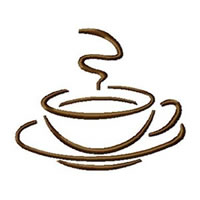Nevertheless, for most specialty coffee aficionados and professionals Juan Valdez is Rodney Dangerfield’s Latin cousin. Colombias carry nowhere near the insider panache of the coffees of Kenya, Guatemala, even of Papua New Guinea and Zimbabwe. Colombia sells well in specialty stores only because it is the sole name on the menu that coffee neophytes recognize.
It would appear that Colombia’s remarkable success at producing large and consistent enough quantities of decent quality coffee to position it at the top of the commercial market has doomed it as an elite origin. The Colombia Coffee Federation has evolved a system wherein hundreds of thousands of small producers wet-process their coffee on or close to their farms, and deliver it to collection points and eventually to mills operated by the Federation, where the coffee is sorted and graded according to rigorous national standards. There is an inherent leveling effect in such an arrangement. One farmer’s wet processing and microclimate may be exceptional and another’s may be mediocre, but both end up mixed in the same vast sea of coffee bags in which the only discriminations are the broad ones imposed by grading criteria. The regional origins famous in the earlier part of the 20th century — names like Armenia, Manizales, Medellin — are now lost in a well-organized but faceless coffee machine.
Private Mill Colombias. In fact, until recently the only viable specialty coffees to come out of Colombia were developed by private mills and exporters operating largely outside the institutional structure of the Coffee Federation. These "privates" often supply coffees from single farms and cooperatives or from relatively narrowly defined growing regions. They may offer coffees produced exclusively from traditional, heirloom varieties of Coffea arabica like typica and bourbon, rather than from a mixture of varieties including newer, Federation-sponsored hybrid cultivars like the controversial Colombia or Colombiana.
By contrast, the standard Colombia coffees exported by the Coffee Federation are distinguished by grade only. Origin is not specified. Supremo is the highest grade, Extra second. The two are often combined into a more comprehensive grade called Excelso. If the only qualifying adjective you see bestowed on a Colombia is a grade name like Supremo or Excelso, you are almost certainly contemplating a standard Colombia from the Colombia Federation of Coffee Growers. Nevertheless, these standard Colombias will not all taste the same. Some lots will display much more quality and character than others, and skillful coffee buyers will find them for their customers.
However, if a Colombia coffee is identified by a regional or market name rather than grade name, it may be either a private-mill coffee or one of a new group of specialty coffees developed by the Colombia Federation of Coffee Growers. Most of these regionally specific coffees come from traditional cultivars, either bourbon or typica, and most display more character than standard lots of Colombia. Those with the most character and distinction tend to be produced in the southwestern part of the country, in the departments of Narino, Cauca (market name Popoyan), and Southern Huila.
Colombia coffee at its finest is, like Costa Rica, a classic. No quality is extreme. The body tends to be medium, the acidity vibrant but not overbearing, and the cup lively and nuanced by understated fruit tones.
Geographic Origins > Coffees from the Americas :
Brazil - Costa Rica - Colombia - Dominican Republic - El Salvador - Guatemala - Honduras - Haiti - Hawaii - Jamaica - Mexico - Nicaragua - Panama - Puerto Rico - Peru - Venezuela
